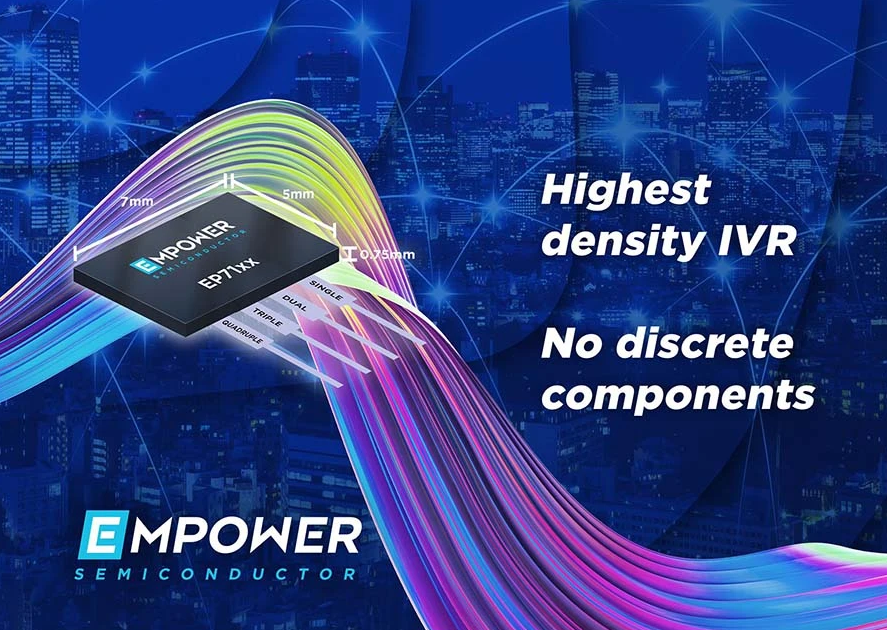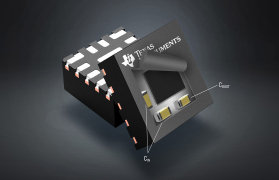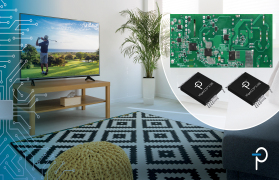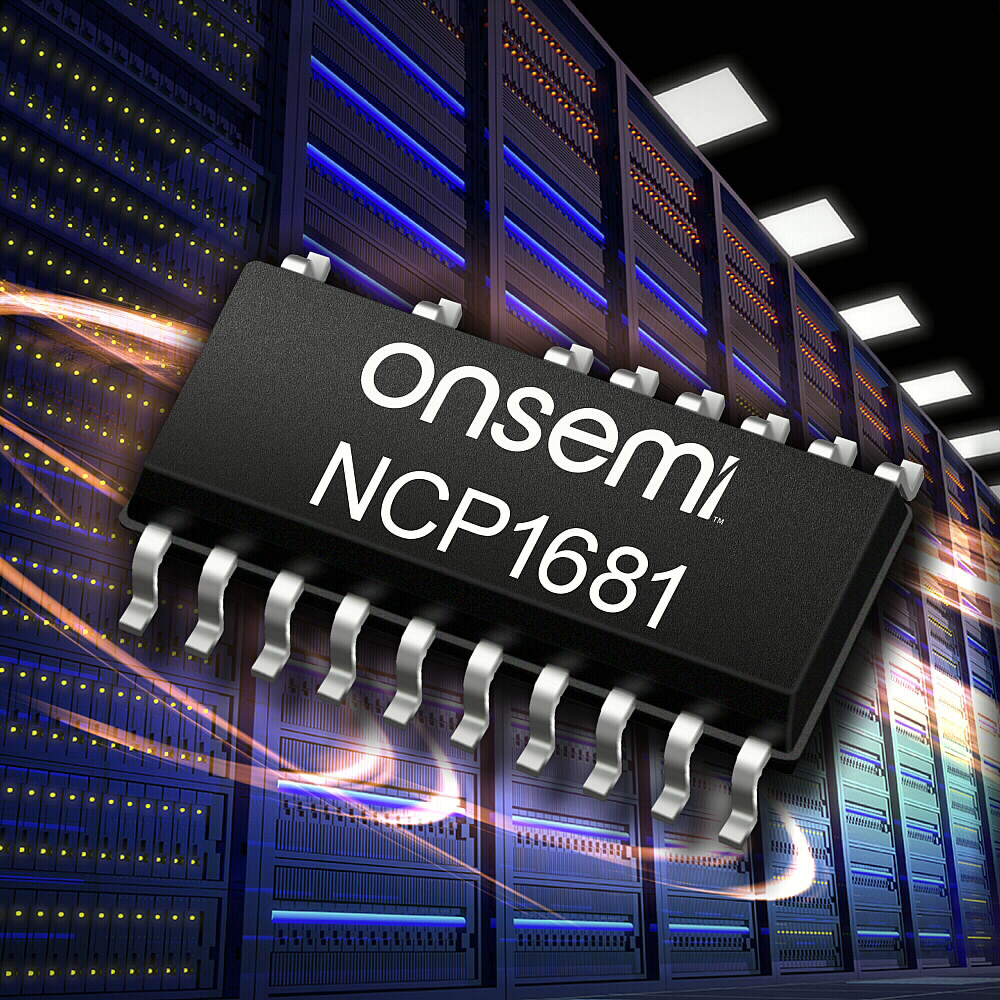Texas Instruments (TI) will launch three new power ICs and address power-management design challenges for electric vehicles (EVs) and industrial systems at the Applied Power Electronics Conference (APEC) 2022. The new products include the LMQ66430 and LMQ66430-Q1 buck converters and TPS7A94 low-dropout (LDO) linear regulator.
The new 36-V, 3-A LMQ66430 and LMQ66430-Q1 buck converters are designed to lower electromagnetic inductance (EMI) in automotive and industrial applications while improving filter size. The devices integrate two input bypass capacitors and one boot capacitor. This enables engineers to meet Comité International Spécial des Perturbations Radioélectriques (CISPR) 25 Class 5 EMI standards while claiming a best-in-class total solution size of of 114 mm2, 1.5-µA quiescent current (IQ), and reduced bill-of-materials costs.
By integrating the three capacitors in a 2.6 × 2.6-mm enhanced QFN package, it allows for a super small solution, and the benefit to customers is a much smaller EMI passive filter, said Carsten Oppitz, vice president and general manager, buck switching regulators at TI.
“By integrating the bypass capacitors very close to the die, we are reducing the internal inductance, which means we have very little overshoot in the switching,” he said. “This eliminates the interference where it’s usually produced. This means we don’t have to filter so much compared to a standard solution where there is a big passive filter that leads to increased weight of the system and increased size of the system.”
Designed to enhance the power and signal integrity of low-voltage devices thanks to its low noise, the TPS7A94 LDO linear regulator claims the industry’s lowest noise of 0.46 µVRMS – at least 42% better than competing solutions – with a high power-supply rejection ratio (PSRR). This helps designers improve system accuracy and precision in highly sensitive applications.
“Low noise is especially critical in certain types of high-precision analog systems. This includes test and measurement, medical, and telecom applications that really require a very clean power rail,” said Alex Chin, vice president and general manager, linear power at TI.
“Even a small amount of noise can have a negative effect on the performance of noise-sensitive circuits. So, for example, think about server and telecom applications, they’re evolving to accommodate more users and to keep up with more demand for precise signals and even higher date capacity,” said Chin. “Without super-low-noise power rails, the next generation of communication systems will fail to increase the channel density and even the data rates needed to accommodate the increase in both the number of connected devices and the data that each consumes.”
One of TI’s newest devices, the TPS7A94, offers the lowest noise for high precision and high accuracy applications, he said. “With the TPS7A94 we’re adjusting two main noise sources of a power rail. The first one is driving the inherent noise generated by the LDO down to industry leading levels, while also providing amazing PSRR performance to clean up the noise coming from the upstream power supply.”
“The inherent noise from the TPS7A94 LDO is at the industry’s best at 0.46 µVRMS from 10 Hz to 100 kHz and we’re at least 42% better than competing solutions,” said Chin. “Secondly, we’ve also provided 100 dB of PSRR at 1 kHz, while also achieving more than 60 dB at 1 MHz to filter out the upstream power supply. We do this while also providing the solution with a very low dropout making it the most efficient LDO with a typical dropout of 150 mV at 1 A.
Chin also noted the TPS7A94 does not require additional filtering components, which make the design smaller and more cost efficient.
Demos
TI also will demo several system-level solutions in booth No. 514. These demos will cover increasing power density, reducing EMI, enabling safer systems, extending battery life, and enhancing the power and signal integrity of low-voltage devices.
The power-density demo shows how to increase power density through an 800-V, 11-kW three-level, three-phase, gallium nitride (GaN)-based active neutral-point clamped (ANPC) inverter power stage. This demo is based on a 6.6-kW ANPC inverter reference design and showcases the 600-V LMG3422R030 GaN field effect transistor (FET), which enables a high switching frequency to reduce magnetics size, increase power density, and achieve a 98.5% peak efficiency in EV-charging and solar-power applications.
In addition to operating at a very high switching frequency and a peak efficiency greater than 98.5%, what’s also interesting about it is that the GAN switch, itself, is intrinsically about 600 to 650 V and this is an 800-V application, said Jeffrey Morroni, manager, power management R&D at TI’s Kilby Labs. With the addition of the AMPC topology, it “allows us to stretch the voltages to get the benefits of GAN at greater than the 600-650-V rating,” he added.
TI also addresses lowering EMI in automotive and industrial applications while improving filter size. This demo uses the new LMQ66430-Q1 low-EMI buck converter, introduced at APEC, to reduce EMI in real time by leveraging a proprietary dual random spread-spectrum technique, while also showing how integrated capacitors simplify designs.
Another demo shows how high-voltage isolation technologies enable reliable operation for safer automotive systems. This demo is based on an Automotive Safety Integrity Level (ASIL) D safety concept-assessed high-speed traction inverter reference design and TI’s UCC5870-Q1 isolated gate driver and UCC14240-Q1 isolated DC/DC bias supply module. Together, they enable high system efficiency with 30 A of peak current, while maintaining system reliability through advanced high-voltage isolation, protection, and diagnostics.
Morroni said the UCC14240 is an isolated bias supply with an integrated micro transformer that is smaller than other solutions available today, which enables a distributed bias supply instead of a traditional centralized bias supply for EVs.
“Today, traction inverter bias supplies are built with a centralized bias supply; it’s a discrete solution with a big transformer that has multiple outputs on the secondary side that drives all of the switches that drive the traction inverter phases,” explained Morroni.
“In contrast the distributed bias [architecture] distributes the weight across the vehicle, improves the reliability through the smaller solution size, and its z-dimension is an order of magnitude thinner than existing solutions, which allows them to integrate more closely, and it has very low EMI, which is incredibly important for automotive applications,” he added.
“Being smaller and more energy dense, it allows us to reduce the weight,” Morroni said. “Having lower EMI allows us to reduce the weight and size of the passive EMI filter, and also by having the distributed generation we can improve the overall system efficiency, which allows for less drain on the EV battery, which also translates to range and/or cost.”
He said a lot of TI’s investments in new technologies and new product developments like GAN and isolation directly translate into benefits for driving range and the amount of battery required for a certain amount of range.
The 7-kW onboard-charger demo illustrates how to extend battery life in EV and hybrid EV powertrain systems. It features TI’s REF35 ultra-low-IQ voltage reference for precision amplifiers, LMG3522R030-Q1 automotive GaN FET, and TMS320F280039C C2000 real-time microcontroller, to help minimize power consumption and achieve >96% system efficiency.
TI also shows how to enhance the power and signal integrity of low-voltage devices such as voltage-controlled oscillators, analog-to-digital converters, digital-to-analog converters and high-end processors. This demo shows the impact of different stimuli on a power supply that uses the new TPS7A94.



















